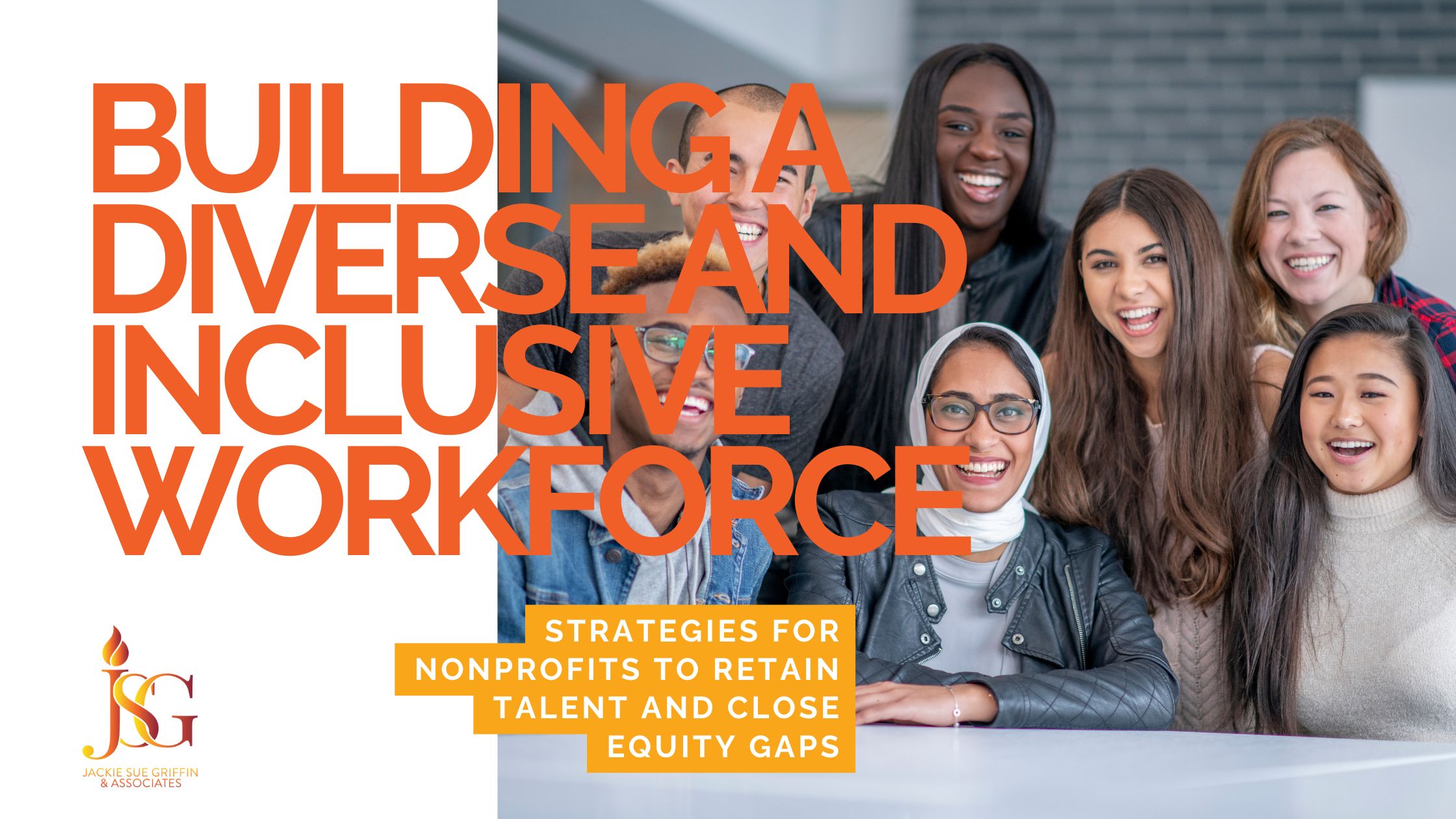
11 Feb Building a Diverse and Inclusive Workforce: Strategies for Nonprofits to Retain Talent and Close Equity Gaps
Creating a diverse and inclusive workforce isn’t just a box to check—it’s a game-changer for nonprofits. When your team reflects the communities you serve, you gain richer perspectives, stronger connections, and a more innovative approach to problem-solving. But diversity isn’t just about who you hire; it’s about fostering a culture where everyone feels valued and supported.
So how can nonprofits not only attract diverse talent but also retain it and close existing equity gaps? Let’s break it down.
Why Diversity Matters in Nonprofits
A diverse team brings together people from different backgrounds, experiences, and perspectives, which can lead to fresh ideas and better decision-making. More importantly, it helps your organization stay in tune with the needs of the communities you serve. Research shows that diverse teams are more innovative, adaptable, and effective at solving complex problems—qualities that are essential for any nonprofit aiming to make a lasting impact.
But despite the clear benefits, many nonprofits still struggle with inclusivity. Unconscious bias, lack of representation in leadership, and outdated hiring practices can all hinder progress. That’s why it’s essential to take a comprehensive approach that goes beyond recruitment and focuses on retention and equity.
Strategies for Recruiting Diverse Talent
To attract diverse talent, nonprofits must start by examining their hiring practices. This includes reviewing job descriptions for inclusive language and ensuring that qualifications listed are essential rather than excessive. Broadening the reach of job postings to platforms and networks that cater to underrepresented groups can also increase the diversity of the applicant pool.
Another critical step is addressing bias in the hiring process. Implementing structured interviews and using diverse hiring panels can help ensure fair evaluations. Additionally, organizations should establish clear metrics to track diversity in recruitment efforts, holding themselves accountable for progress.
Retaining Diverse Talent
Recruitment is only the first step; retention is where true inclusion takes root. Nonprofits must create an environment where employees feel valued, respected, and empowered to contribute their unique perspectives. This begins with fostering open communication and providing opportunities for professional growth.
Mentorship programs can play a significant role in retention by connecting employees from underrepresented backgrounds with experienced leaders who can guide their career development. Regular training on topics like cultural competency, unconscious bias, and inclusive leadership is also essential to maintaining an equitable workplace.
Building an Inclusive Culture
Inclusion requires more than policy changes; it’s about cultivating a culture where everyone feels they belong. Leaders play a pivotal role in setting the tone, modeling inclusive behavior, and holding themselves accountable for fostering equity. Celebrating cultural diversity through events, highlighting employee stories, and encouraging collaboration across teams can strengthen this culture.
Feedback mechanisms, such as anonymous surveys or listening sessions, are invaluable for understanding employee experiences and identifying areas for improvement. Acting on this feedback demonstrates a commitment to inclusion and builds trust within the workforce.
The Role of Nonprofit Leaders
Leadership commitment is crucial to achieving diversity, equity, and inclusion goals. Nonprofit leaders must champion these efforts by prioritizing resources, setting measurable objectives, and communicating the importance of these values to stakeholders. By integrating DEI into the organization’s mission and strategic plan, leaders ensure that these principles are not an afterthought but a fundamental part of operations.
The Path Forward
Building a diverse and inclusive workforce is an ongoing journey that requires persistence, reflection, and adaptation. By implementing intentional strategies, nonprofits can create environments where all employees feel valued and empowered to contribute their best work. As equity gaps close and inclusion flourishes, organizations are better positioned to achieve their missions and make a meaningful impact in the communities they serve.

No Comments